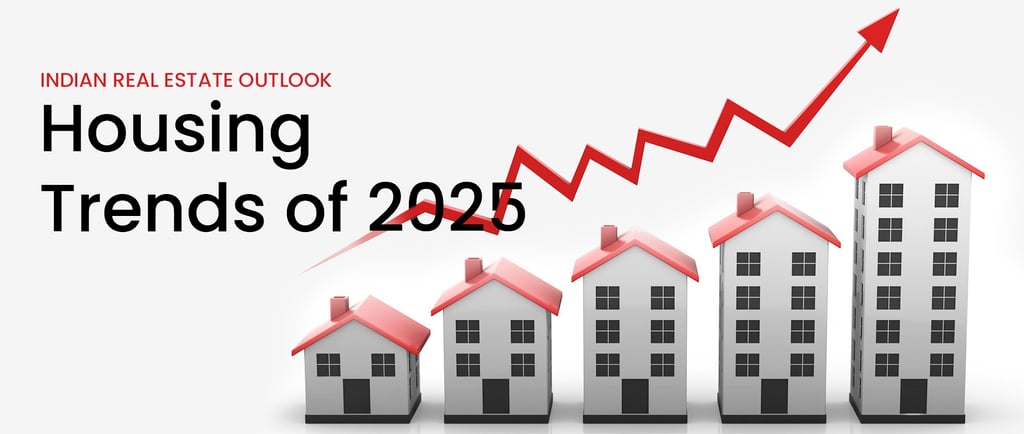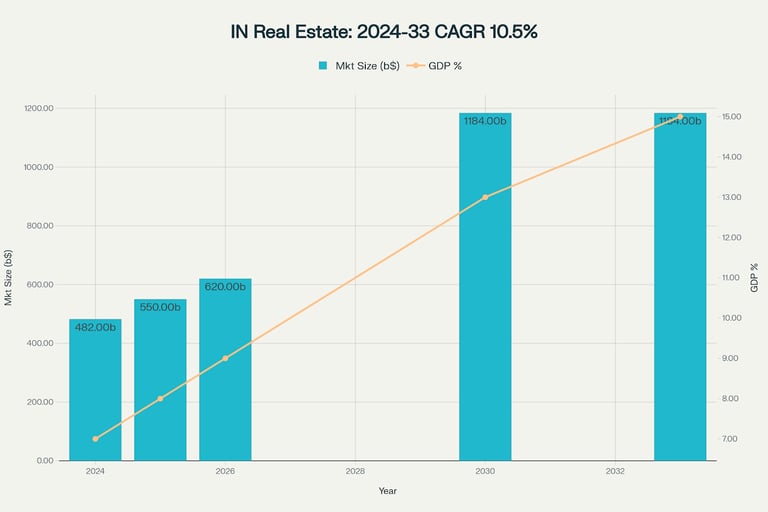How the 2025 Global Economic Changes Are Shaping the Indian Real Estate Market
The real estate sector is often a mirror of the broader economy — sensitive to global events, currency shifts, trade policies, and investor sentiment. In 2025, a series of significant global economic changes are leaving their mark on India’s property market, from luxury apartments in Mumbai to affordable housing projects in Tier-2 cities.
flixah developers
8/12/20254 min read


How the 2025 Global Economic Changes Are Shaping the Indian Real Estate Market
The real estate sector is often a mirror of the broader economy — sensitive to global events, currency shifts, trade policies, and investor sentiment. In 2025, a series of significant global economic changes are leaving their mark on India’s property market, from luxury apartments in Mumbai to affordable housing projects in Tier-2 cities.
From tariff wars to inflation trends, and from shifts in global capital flow to the emergence of new investment hotspots, these forces are reshaping how Indians buy, sell, and invest in real estate. Let’s break down the key trends and their implications.
1. Tariff Wars and Global Trade Tensions
Recent trade disputes — especially the United States imposing higher tariffs on major economies like India, Brazil, and China — are rippling through global supply chains.
Impact on Indian Real Estate:
Higher construction costs: Tariffs on imported goods, machinery, or raw materials such as steel and aluminum raise construction expenses for developers.
Shift in demand: If certain export sectors slow due to tariffs, disposable income in those industries may fall, impacting mid-to-high-end property demand.
Opportunities for domestic suppliers: Indian manufacturers may benefit from reduced competition, leading to more locally sourced materials and potentially stable long-term pricing.
Example: A premium housing project in Gurugram that relies on imported elevators or Italian marble may see cost escalations, while projects using local materials could offer more competitive pricing.
2. Global Inflation and Interest Rate Movements
Inflation remains a major concern worldwide, with many central banks, including the U.S. Federal Reserve, adjusting interest rates to control rising prices. In turn, the Reserve Bank of India (RBI) must balance domestic inflation control with keeping the rupee stable.
Impact on Indian Real Estate:
Home loan EMIs: Higher interest rates directly increase mortgage costs, slowing demand from middle-class buyers.
Investment shift: When interest rates are high, fixed-income investments like bonds become more attractive, potentially diverting funds away from real estate.
Luxury segment resilience: Wealthy buyers, less dependent on loans, may still invest in high-end properties despite higher rates.
Tip for Buyers: Locking in a fixed interest rate on a home loan in early stages of a rate hike cycle can help avoid cost escalations.
3. Rise of Foreign Direct Investment (FDI)
Despite trade disputes, India’s real estate market continues to attract foreign capital, thanks to:
Rapid urbanization
Government infrastructure projects
Regulatory reforms like RERA (Real Estate Regulatory Authority)
Impact on the Market:
Commercial real estate boom: Global companies expanding in India require office spaces, co-working hubs, and logistics warehouses.
NRI interest: The depreciating rupee in 2025 has made Indian property more affordable for overseas Indians.
Joint ventures: Developers are partnering with international firms for smart city projects and luxury townships.
Example: Several UAE-based developers are collaborating on coastal housing projects in Goa and Kerala, targeting both local and international buyers.
4. Shifts in Currency Values
The Indian rupee’s fluctuations against major currencies like the U.S. dollar can make real estate more or less attractive to foreign investors.
Impact:
NRI advantage: When the rupee weakens, NRIs can buy Indian property at effectively lower prices in their home currency.
Import cost rise: A weaker rupee increases the cost of imported construction materials.
Tourism-driven markets: Popular destinations like Goa or Jaipur may see more foreign buyers taking advantage of favorable exchange rates.
5. Climate Change and Sustainable Development
Global economic discussions now heavily feature sustainability. International investors often prefer green-certified projects.
Impact on Indian Real Estate:
Premium for eco-friendly housing: Homes with solar panels, rainwater harvesting, and energy-efficient designs command higher prices.
Government incentives: Policies encourage builders to adopt green construction practices.
Demand from millennials: Younger buyers, influenced by global climate discourse, are more likely to choose sustainable communities.
Example: In Bengaluru, green-certified apartment complexes are seeing 10–15% higher occupancy rates compared to non-certified ones.
6. Technology and Global Innovation Trends
From AI-driven property searches to blockchain-enabled transactions, global tech adoption is transforming real estate.
Impact in India:
Virtual tours: International buyers can explore properties without traveling.
Smart homes: Global tech standards are influencing demand for app-controlled lighting, security, and appliances.
Faster sales cycles: Digital documentation and e-signatures speed up transactions, even across borders.
7. The Affordable Housing Push
While global markets talk of luxury and skyscrapers, the Indian government’s continued focus on “Housing for All” is meeting a critical domestic need.
Global economic link: International funding agencies and development banks are investing in Indian affordable housing projects, seeing them as stable, long-term opportunities.
Impact:
More projects in Tier-2 and Tier-3 cities.
Improved infrastructure in semi-urban areas.
Opportunities for investors to enter early in developing markets.
8. Rise of Tier-2 Cities as Investment Hubs
Global urban development trends show that smaller cities often deliver better ROI for early investors.
Indian Context:
Cities like Indore, Surat, Lucknow, and Coimbatore are attracting IT companies, startups, and manufacturing units.
Lower land costs and improving infrastructure make these cities more appealing than overcrowded metros.
Example: Indore’s property prices have risen 15% in 2025 due to IT park expansions and better connectivity.
9. Luxury Real Estate and Global Buyers
The global wealthy class continues to see Indian luxury real estate as an attractive option — whether it’s a penthouse in Mumbai, a farmhouse in Delhi, or a heritage villa in Rajasthan.
Reasons:
Lower cost compared to global luxury hubs like London or New York.
Cultural and lifestyle appeal.
Potential for tourism-based rental income.
10. Outlook for 2025 and Beyond
Given the current mix of opportunities and challenges, here’s what industry experts expect:
Moderate price growth in most urban areas, with spikes in select Tier-2 markets.
Higher demand for rental properties, especially in cities with large migrant workforces.
Continued NRI investments, particularly if the rupee remains weak.
More foreign collaborations in commercial and luxury projects.
Conclusion
The Indian real estate market in 2025 is a vibrant reflection of global economic currents. Tariff disputes, currency shifts, sustainability drives, and tech innovations are all shaping how properties are built, sold, and lived in.
For buyers and investors, the key takeaway is adaptability. By staying informed about both local and global economic changes, one can identify the right opportunities — whether it’s locking in a good mortgage rate, exploring a Tier-2 city, or investing in a green-certified luxury home.
In today’s interconnected world, a decision made in Washington, Beijing, or Brussels can influence the price of an apartment in Pune or a villa in Goa. The winners in this evolving landscape will be those who think globally but act locally.


